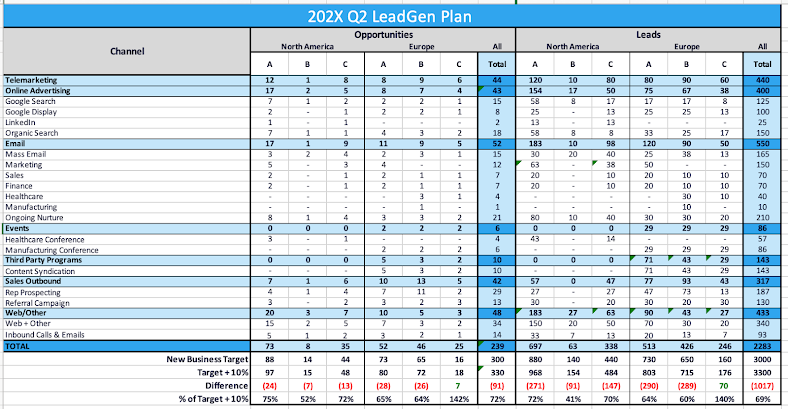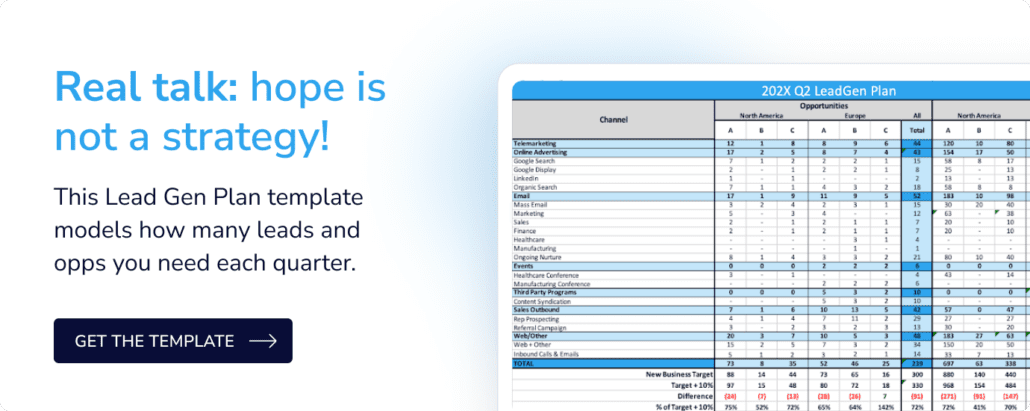In its annual report, the Conference Board found that among Standard & Poor’s 500-stock index companies that were at the bottom of performers, the CEO succession rate jumped five percentage points, from 12.2 percent in 2015 to 17.1 percent in 2016. That’s well above the rate over the past 16 years.
No matter the size of the team or industry, the wind of change is here. Marketing is shifting to a revenue center””a role once reserved for Sales alone””and marketing leaders must create new business, expand the existing business, and consistently drive growth.
So what does revenue-focused marketing do that’s so different? Let’s focus on three things.
>> Related: Marketing’s Shift from Brand to Revenue <<
As much as we talk about sales & marketing alignment, how many of us actually dedicate the time and energy to it every quarter?
Yep, end of quarter is crazy for sales. But regardless, you really do need to book a conference room and spend an afternoon reviewing the previous quarter’s performance and making sure you’re aligned on pipeline and revenue goals.
Take the time to dig into the numbers””exploring the quality of leads, engagement within key accounts, and tackling questions like:
- Which campaigns moved the needle?
- What activities drove the best inbound leads for sales follow up?
- Are we targeting the right people or do we need a refresher on personas?
- Were there any surprises?
As marketers, if we don’t have that solid alignment, how can we realistically plan for the upcoming quarter and remainder of the year?
Having been in some organizations where marketing avoided (literally) involving sales in planning, it doesn’t work and no one wins.
And by that, I mean plans that tie closely to revenue goals.
That’s why the first item is so important. Your quarterly and annual plans must work back from revenue goals, which are set by the business and understood by sales & marketing. From that key goal, you’re looking at historical data, conversion rates, and average deal size to figure out how to allocate budget.
>>Not super mathy? Download this Lead to Revenue Template to help you get started.<<
A typical marketing org probably has demand gen, digital, content, and ops. Everyone on the team should own their piece of the plan, with individual goals and MBOs that map back to revenue targets.
If Sales Development falls under marketing, review performance and brainstorm new ways to optimize and recharge. Do a sanity check to make sure SDR outreach is a complement to sales and marketing activities, and not drowning your prospects in over communication.
As a team, there’s no better feeling than celebrating marketing’s impact on a great quarter. Cheers!
And have a way to get at the data without entering the 10th circle of Excel hell or waiting for ops to pull reports.
Assuming you’re using marketing automation and a CRM system, have these metrics in your back pocket:
- Lead to opp conversion
Sure, this metric relies on sales follow up and performance, but it also reflects lead quality. Track this conversion rate monthly but also go back a year or two and observe trends. - Campaign opportunity influence and ROI
Whatever you do, have access to a dashboard that shows which campaigns and content are influencing opportunities during the quarter. - Email performance
Opens and click-throughs are a great way to check the temperature of your nurture campaigns. Email is still the best way to engage leads once they’re in your database. Poor performance could be a sign of exhaustion, lack of compelling offers, or crummy content. - Funnel velocity
Work with marketing ops to ensure you have a way to track lead flow from beginning to end. When the CEO asks, “How long does it take a lead to convert to an opportunity?” you should probably have the answer ready to go. - Happiness
Remember what happiness and fulfillment feel like? Don’t lose sight of your team and your customers. Don’t get so caught up in data and hitting your numbers that you sacrifice quality and sanity.





